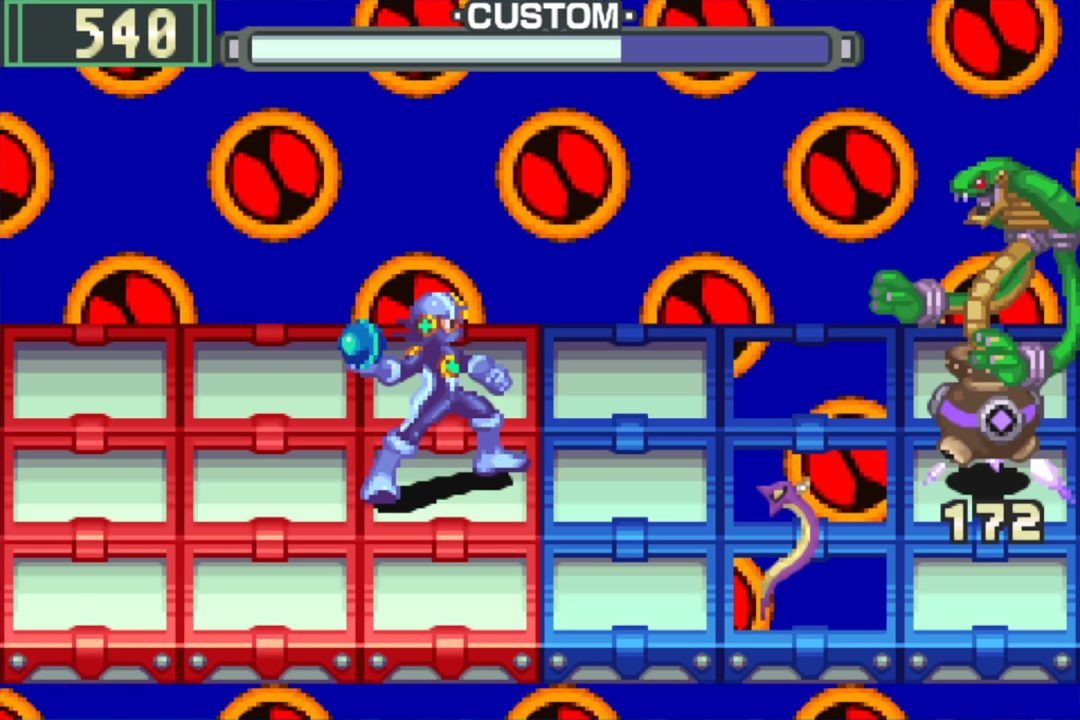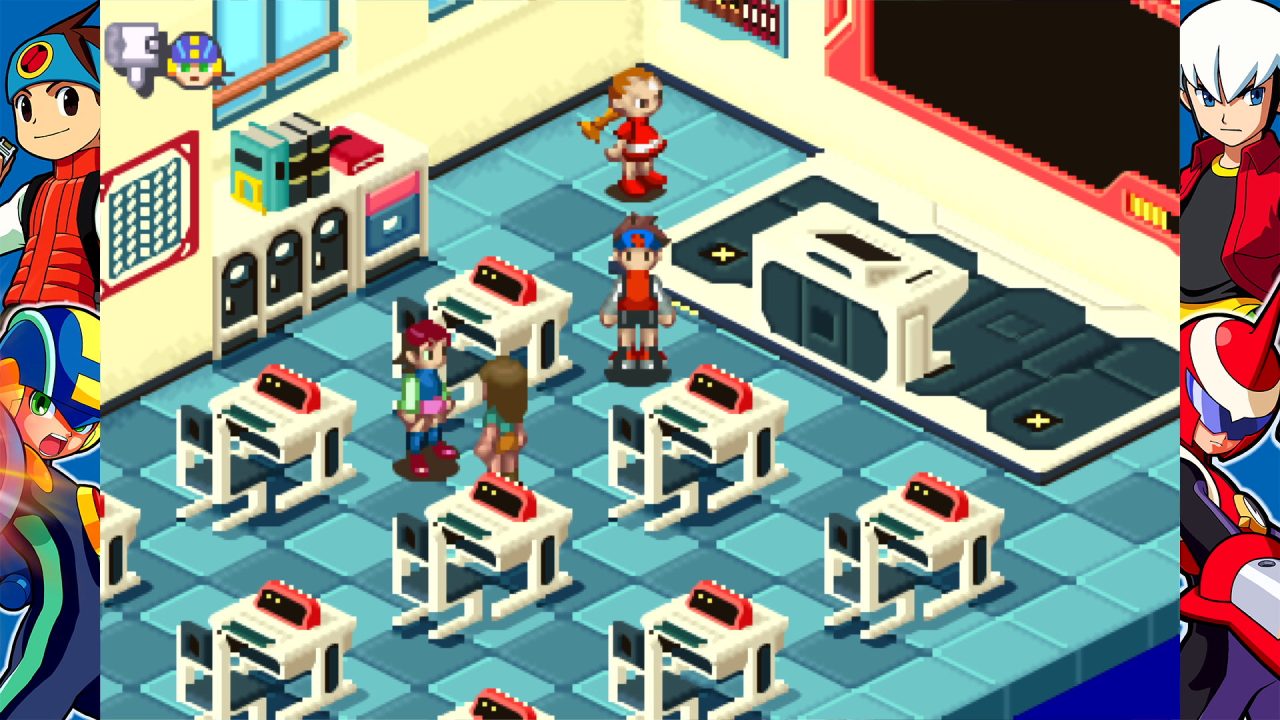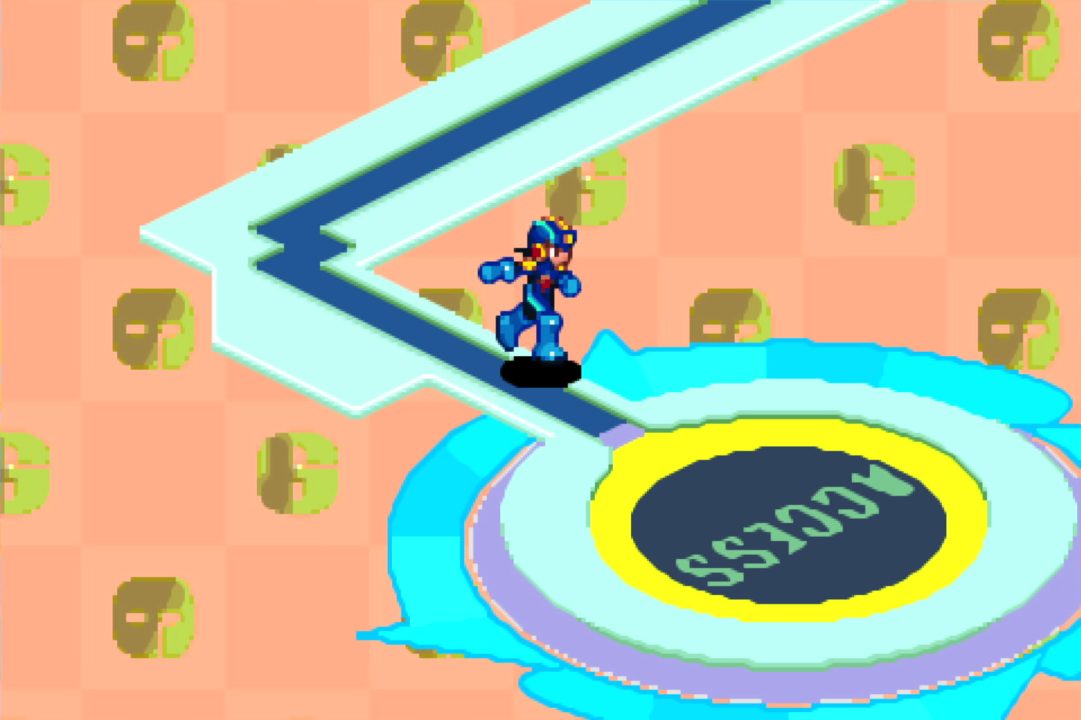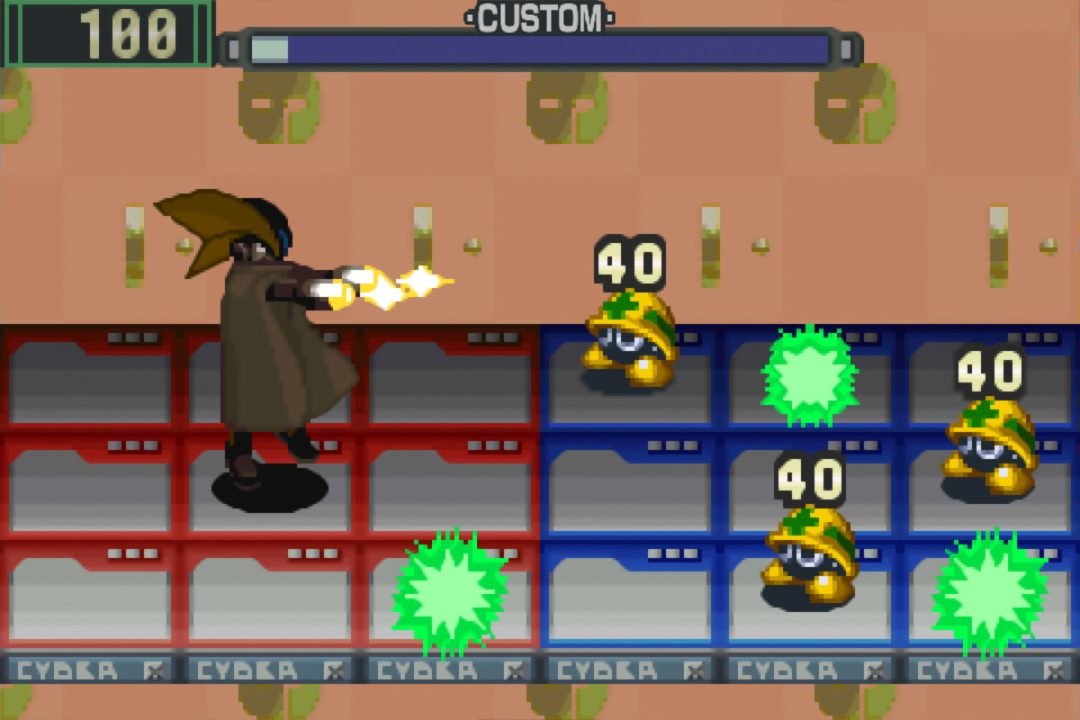When things on the internet go haywire, who do you turn to? Luckily, Mega Man is here to clean up. With Capcom’s new release of the extensive 10-game Mega Man Battle Network Legacy Collection, which includes every game in the main series, you can take on every threat and delete all the viruses. Here in Vol. 1, the first three (technically four) entries make for an appropriate introduction.
The Mega Man Battle Network games were initially released on the Game Boy Advance, starting in 2001 and continuing annually through 2006. Though this series essentially received its own spinoffs with the Star Force series, there had been little attention given to Mega Man Battle Network from Capcom, even though fans have been clamoring for a re-release of the entire series. It’s a relief that these games are back on the digital shelf, as a reminder of what seems like an entirely different world of 20-ish years ago.

The classic NES Mega Mans (Mega Men?), side-scrolling action games without elaborate stories, don’t particularly mesh with the RPG genre. Something strictly turn-based, like Dragon Quest, wouldn’t feel like Mega Man. The developers at Capcom instead created their own one-of-a-kind real-time battle system for Mega Man Battle Network that hasn’t been emulated since. The results are a dynamic melding of action and preparation combined with the more extensive stories you’d expect of the genre.
All of the games start from the same place: A 6×3 grid, with battles that take place in real time but with a component that resembles what we now call deck-building games (Mega Man Battle Network far predates Slay the Spire), featuring the beloved Blue Bomber. From this blank canvas, the developers built out a library of chips (as in computer chips) containing a potentially limitless number of actions, including attacks, health restoration, and moves that manipulate that simple grid. Before you use those chips, you must collect them and curate your folder of 30 chips potentially available in battle. Much like in the main Mega Man games, you must also develop your skill, dodging enemies’ attacks and lining up your own, with an RPG-like need to manage your loadout between battles. Even battles with enemies you’ve fought plenty of times before can play out differently because of the chips you have available and how well you play. There’s nothing else like this system, and it expertly does what it promises in delivering Mega Man in RPG form. While I didn’t find the drive to collect ’em all as strong as I would in that other collection game (Pokémon), it was always exciting to find new chips, see how they work and find ways to fit them into my strategies.
It wouldn’t make much sense for a game called Mega Man Battle Network to feature someone other than Mega Man as the hero. But while the Blue Bomber does all of the fighting, the series mainly follows Lan, a fifth-grade NetBattler. In this series, Mega Man is a Navi, a program that can traverse the net (basically the internet). A program can’t run itself, and that’s where NetBattlers come in. Mega Man Battle Network takes place in a society that’s futuristic, at least by early 2000s standards, in which most electronic devices are connected to the net for automation. There are also spaces on the net reserved as social hubs, connecting the world. Of course, if you can connect to the network, so can those with nefarious intentions for the net and for humanity: villainous guerrilla organizations that spread viruses on the net to cause chaos so bad it’d get Jack’s attention. It’s the NetBattlers’ job to keep these despicable groups in check, jacking in to the net to fight back.

The first Mega Man Battle Network is an excellent introduction to the series. Though it’s on the shorter side, the battle system and world are already fully realized. Narratively, the stage is set for the series. You’re introduced to Lan and his friends, the town of ACDC, the evil WWW organization, and NetBattling. Lan is a bit of a slacker, more into sleeping and playing online than his studies. But he’s forced to take things seriously as the WWW’s schemes ensnare Lan and his family and society at large. The concepts in the first game feel fresh, and you’re shown the country of Electopia’s society and its vulnerabilities. In hindsight, it’s more basic than its successors, but still robust enough to stand on its own.
Mega Man Battle Network 2 appropriately expands on everything the first entry did. In addition to adding more chips to collect, the second game introduces styles. Styles enhance Mega Man’s trusty blaster to make it do more damage in different ways. The neatest thing is that the first style you obtain is based on your personal playstyle. I got WoodGuts style, a stronger blaster attack with a shorter and narrower range, because I used my blaster a lot. Styles lend even more depth and strategic options to the combat compared to the first game. The story is similarly expanded with a new adversary: the shadowy Gospel movement, a global threat that Lan must confront by traveling abroad from Electopia, both on the net and in the physical world. The Gospel feels extra dangerous in its systematic and violent approach to trying to conquer the world, making for a thrilling ride.
Mega Man Battle Network 3 is where the series fully grows into itself. It’s the first installment to get two different versions — White and Blue — which would become a series institution, with annual releases, mimicking stepcousin Pokémon. WWW is back and causing even more chaos. In between their plots, like sabotaging TV shows and releasing all the animals from the zoo, Mega Man Battle Network 3’s story deviates into tangents much more than its shorter predecessors did. That’s not necessarily a problem, as the characters and subplots are among the most colorful and memorable in the series so far. The third entry adds Navi Customizer programs for Mega Man, which give him passive bonuses, like more HP or stronger blaster fire. You must fit Tetris pieces representing the programs into a box, following specific parameters if you want them to work properly. Though you can break the rules, shoving in more pieces for a better build, you do so at your own risk. Once, I tried piling on the HP+ programs, but as my array wasn’t configured properly, when Mega Man was in battle, his health would tick down a point at a time like a countdown to destruction. The two versions differ in odd ways compared to Pokémon. Each version includes different chips and different enemies, but also different styles and a few other deviations, though they share the same story. As the chips in these games can vary wildly, which version you pick can have a significant impact on your experience. This collection’s inclusion of all versions from games 3 through 6 could provide extra incentive to try out both.

In general, Mega Man Battle Network’s stories are on the basic side, and the villains’ plans amount to no more than Saturday morning cartoon plots. Lan’s friends are also NetBattlers with plenty of charm of their own, but most of them don’t feature particularly prominently. It’s interesting and humorous to take a gander back to what writers from 2001 predicted for the future of the internet at a point when it was still in a frontier stage. Today, we live in a world eerily similar to the year 200X depicted in these games. The “internet of things” is a reality now, and the internet has grown into the all-consuming beast that it is today. The stories serve as a warning of sorts not to rely too heavily on automation and not to make services too public. But they’re also simply cute slices of life in a technologically advanced society.
Being from the early 2000s, the games generally come with the typical flaws of RPGs from around that time. The high random battle rate is more glaring now. Even though the battles are fun, constantly having to fight can become grating and frustrating, especially if you’re not sure where you’re supposed to go. Combined with a lot of backtracking between only a few different locations in each game, this means you’ll see the same enemies a lot. It’s rough compared to more streamlined and polished modern games.
At odds with conventional wisdom for visual media, Mega Man Battle Network is best enjoyed on the smallest screen available, i.e. Switch or Steam Deck. The games appear to be simply emulated, and the early-2000s sprites are mighty stretched on a TV. That said, in handheld mode, the sprites evoke the SNES Mega Man X games, and are clean and crisp with fun designs for enemies, especially the bosses, cool alternate versions of classic Mega Man baddies like ToadMan, DrillMan, etc. The sounds are definitely from a handheld game from the 2000s, with low-fi electronic tunes that, while perhaps less impressive today, still perfectly fit the hi-tech atmosphere of the games. The controls are snappy and spot on, which is absolutely necessary in action-heavy games like these.

Overall, in Vol. 1, you’re getting three games that each would be worth playing on their own, despite showing their age. This collection comes as a hit of nostalgia for handheld games in an odd time where, aside from smartphones, handheld video-game platforms are a thing of the past, with a quasi-exception for the Switch, which allows both home and handheld gaming. With such a deviation from Mega Man, devoted fans of that series won’t necessarily find Mega Man Battle Network to be essential playing. However, for those who wished Mega Man were more RPG-like, those who enjoy collecting a la Pokémon or those who enjoy an awesome, unique battle system, there’s never been a better time to jack in to Mega Man Battle Network.
Check back again soon here at RPGFan for my thoughts on Vol. 2.



